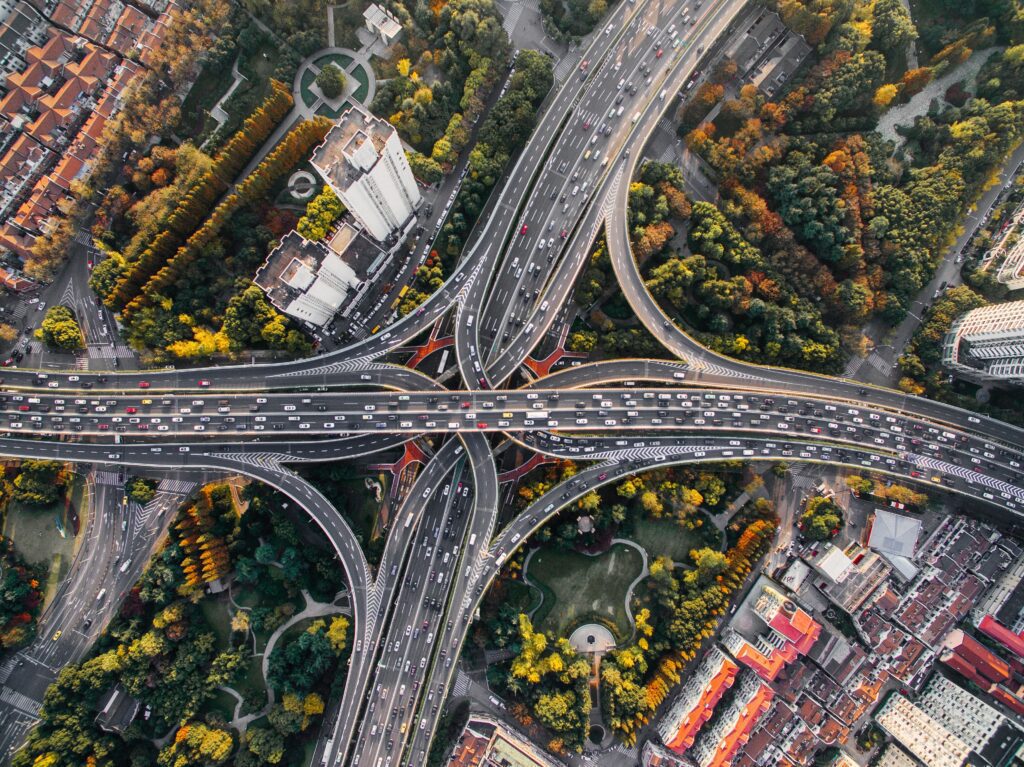There’s no doubt that the supply chain story of 2021 was congested ports and driver shortages. Never before had the words “supply chain” and “logistics” appeared in so many national headlines.
It will likely dominate headlines in 2022 as well.
As the New Year approaches, California last week had a record backup of 101 container ships waiting to enter the ports. At the same time, the ports in Los Angeles and Long Beach in November handled their lightest container traffic since June 2020.
The executive director of the Port of Los Angeles attributed the decline “to an influx of smaller ships that have been dispatched by retailers, manufacturers and logistics companies as they scramble to get around bottlenecks and satisfy consumer demand,” he told the Wall Street Journal.
Still, the ports in California are slated to handle more than 10 million boxes, a record import volume.
Port backups have occurred due to a shortage of warehouse workers, drivers, and trucking equipment.
The problem isn’t going away quickly, and it’s not just in the United States. While some ports facing a logjam have seen a decrease in wait times for containers being moved, there’s still a major backup. And consumers worldwide are still, as they say, paying the price at the pumps. Gas prices soared in 2021, and other items like cars and clothing saw an uptick in cost for consumers.
In the UK, for example, consumer prices rose 5.1% from a year earlier. That increase was the most in a single year since September 2011, Bloomberg reported. Core inflation, which strips out energy and other volatile items, climbed to 4%, the highest since 1992, Bloomberg said.
The Consumer Brand Association, which represents Procter and Gamble, General Mills, Hostess, Campbell Soup, ConAgra, Coca-Cola, and others, said in a report that “the country is at an inflection point where the supply chain’s vulnerabilities are exposed and it is time to act on the lessons we have learned.”
Let’s look at the current state of our ports, the coming infrastructure investments, and other factors at play. From there we can find ways to soften the blow of these disruptions, and chart the best path forward.
It’s not just California
The port in Long Beach may have stolen most of the major news headlines, but it was far from the only port facing a backup of containers waiting to be transported.
Mexico’s Port of Manzanillo faced major overflows after taking on the highest number of containers the port has received in approximately two years. At one point in October 80,000 shipping containers were stacked at the Port of Savannah – 50 percent more than usual, according to The New York Times. Some of the containers had been there for months or longer.
Major logjams also hit New York and New Jersey. And at one point in September there were more container ships waiting off Shanghai and Ningbo in China than Southern California.
Making things more difficult for shippers, it’s sometimes impossible to know where your cargo is when it’s in Chinese waters or on Chinese roads. China’s new Personal Information Protection Law, which went into effect Nov. 1, limits how much access and control the public, both domestic and foreign, has around data. That can further compound the challenges of estimating arrival times or ensuring your cargo arrives securely.
Infrastructure legislation is no quick fix
Lawmakers in the U.S. finally came to an agreement on an infrastructure bill that President Joe Biden signed Nov. 15.
For most people paying attention to the infrastructure in the U.S., this investment is probably a few decades overdue. Roads, bridges, and railways have been deteriorating for years, and the influx of money will help reverse years of damage.
According to the White House, some 20%, or 173,000 miles, of the nation’s highways and major roads are in poor condition. So are 45,000 bridges.
But if you’ve ever driven on a road under construction before, you know these things take time.
Take the ports for example. The $1.2 trillion bill will send $17 billion to U.S. ports. Port expansions are years-long projects.
At best, it will be three to five years before we really start to see tangible infrastructure improvements in the supply chain.
The good news, of course, is that these improvements will finally get done. Thousands of jobs will be created, and there will be increased efficiency and trade. There is no wasted dollar in infrastructure investment.
But until these improvements come to fruition, there will still be infrastructure-related issues to deal with.
Railroad systems, for example, have been begging for investment for years, and trains will continue to be stopped in unsecure places where criminals will continue to pillage their cargo. Some companies have even moved away from rail shipping because of this.
Online shopping didn’t help
The trend toward shopping on your phone and computer started long before the COVID-19 pandemic, but there’s no doubt it surged when virus mitigation measures forced people into their homes.
An additional $105 billion in U.S. online revenue was added in 2020, accelerating ecommerce by two years, Digital Commerce 360 estimates. Online sales hit $791.70 billion in 2020, up 32.4% year over year, according to Commerce Department figures.
This transformation in the way consumers buy products dramatically affected the supply chain. Consumers are going to retail stores to get their goods much less often, and companies, like Amazon for example, have been forced to invest in more technologies and warehouse space to satisfy consumer needs. Trucking routes have changes, and fulfillment centers keep popping up.
There’s no reversal on the way, meaning the issues facing the supply chain industry before the pandemic only got worse as it strained resources that were already being strained and changed.
Where are the drivers?
By now you’ve heard all about the truck driver shortage and how it’s impacting the supply chain. It’s not just a problem in the U.S., it’s affecting companies worldwide, and it may be an issue for a while.
More than half of the drivers on the road right now are over the age of 45, and nearly a quarter of them will reach retirement age in the next 10 years.
Companies are trying to rectify the issue by recruiting younger adults and women.
The infrastructure bill recently signed into law in the U.S. set up an apprenticeship program that would enable trucking companies to hire drivers as young as 18.
Visibility to navigate the present and future
With shippers, 3PLs, and carriers pushed to their limits right now, adding visibility has never been more important. While visibility alone won’t solve these problems, it will help you manage them.
If you’re facing the driver shortage, leverage technology and other solutions to improve the efficiency and safety of the drivers you do have by finding more efficient routes.
If you’re a shipper using the railroad system, you don’t have time to wait until railroad shipping becomes safer and more efficient. Investing in visibility will be critical to managing assets. You need to know where the rail cars carrying your shipments are located, and trains need access to the visibility to know what’s ahead and where they can safely stop.
When shippers and 3PLs can use visibility to keep carriers accountable. Some carriers will cut corners and sacrifice the integrity and security of cargo to get around capacity and driver shortages. Visibility that shows you the status and location of your products will enable you to better enforce standard operating procedures.
Real-time analysis of driving behavior, for example, can help keep drivers safe and available by avoiding road hazards, red zones, and other risks.
The pressure on the supply chain is going to last longer than we want it to. But the breakthrough on infrastructure legislation is a step in the right direction, even if it will take years to see the benefits. For now, technology can help ease the burden of the risks we face as supply catches up to demand.
Learn more about how Overhaul is using intelligence-driven risk management and real-time visibility solutions to improve the businesses of global shippers.
- Platform
- Overhaul PlatformWe’re different on purpose
Overhaul PlatformWe’re different on purpose
- Solutions
- IndustriesWorld-leading in-transit solutions
- SectorsA unified, real-time view
IndustriesWorld-leading in-transit solutionsSectorsA unified, real-time view
- Wins
- Resources
- Resources
Resources- ReportsUp-to-date cargo theft intelligence from around the world
- BlogThought leadership and industry commentary
- WhitepapersThe latest logistics research
- Case StudiesClient success stories
- NewsRecent Overhaul news and media coverage
- RecoveriesSuccessful cargo theft recovery stories
- About us
- About OverhaulWe’re different on purpose
About OverhaulWe’re different on purpose- Meet The TeamLearn more about our diverse leadership
- SustainabilityFind out how we’re committed to a sustainable future
- PartnershipsWhere collaboration drives innovation
- Opportunities with OverhaulMake your next move with Overhaul





